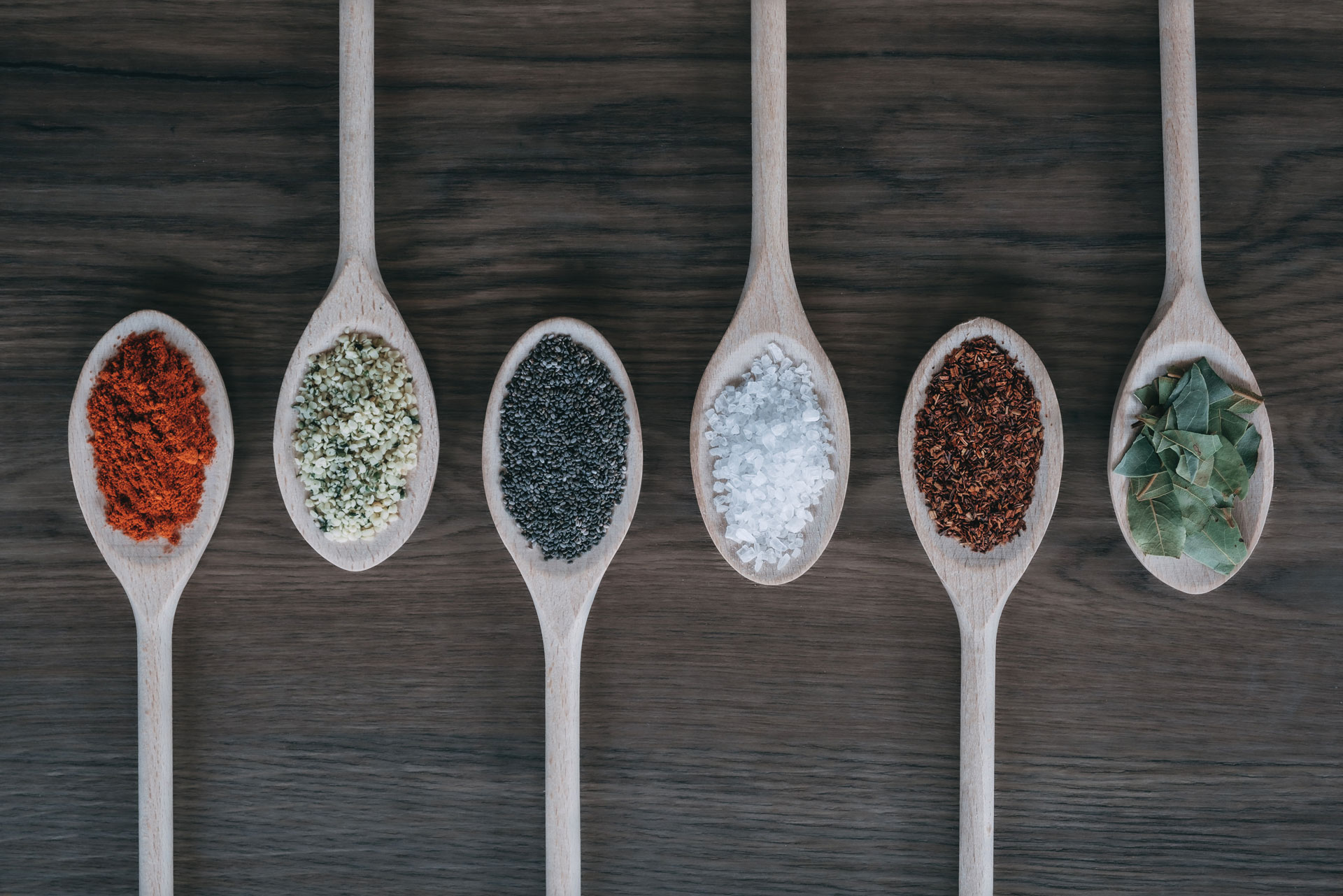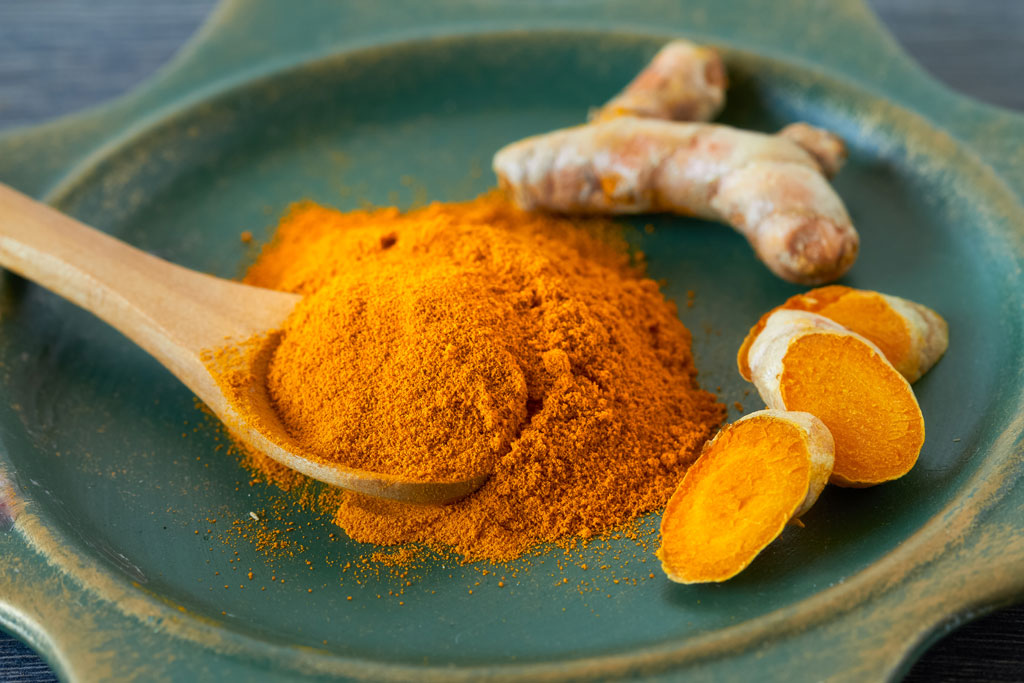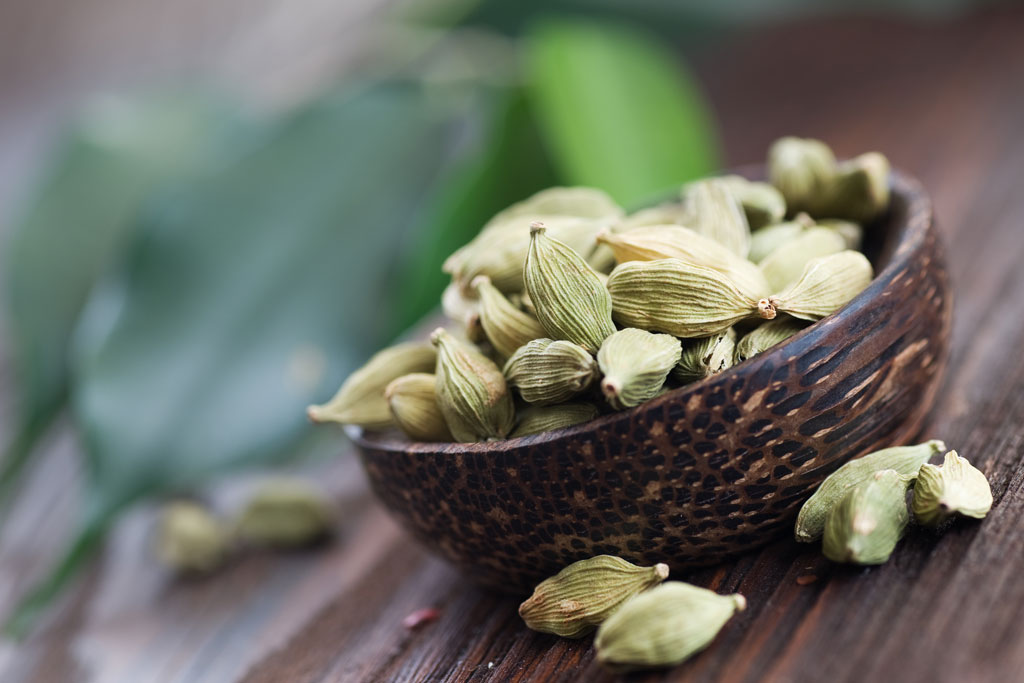
- HOME
- FOOD & DRINK
A Chef’s Guide To Spices
Spice up your life with Niki Webster's zingy seasoning guide
By | 3 years ago
Knowledge of the spice cupboard is central to a chef’s success – so get clued up with this handy guide from Niki Webster, self-proclaimed Spice Queen and founder of plant-based food brand Rebel Recipes.
A Chef’s Guide To Spices
Spices are at the core of my cooking: they transform simple ingredients into the most spectacular things. The addition of just one spice can elevate a dish to a whole new level. Understanding how to utilise different spices is so important, especially in plant-based cooking. Spices are also particularly relevant at a time when we’re trying to cut down on supermarket trips as they last for years and can jazz up store cupboard recipes.
I’ve always loved spice. From a young age, I was often turned off my mother’s traditional European flavours and found them rather bland. As soon as I discovered curry paste, my life was transformed, and food finally started to dance and sing with flavour and excitement. It was the start of the most flavourful journey. When used correctly, spices can add layers of flavour, depth, richness and colour. You can mix and match spices or use one on its own. Personally, I think a mix is better – flavour profiles blend together to add complexity to a dish. But even just a small teaspoon of turmeric or paprika can really heighten the flavours of the ingredients you’re cooking with, as well as help reduce the use of salt, fat and sugar. With that in mind, here’s how to utilise your spice cupboard to its full potential.
Cumin
Cumin is the secret to chillies, curries and tons of your favourite smoky, earth dishes. Best dry-roasted in the pan, you can use this spice in Mexican, Indian and Moroccan cuisines and it complements dried lentils, beans, rice and couscous, as well as fresh cauliflower and potato. Cumin combined with black mustard seeds and turmeric is a great base for any curry dish, while cumin seeds combined with spiced tomatoes makes a delicious breakfast Shakshuka. It also works well on tofu, or added to a dukkha blend to help elevate soups and stews.
Use cumin as a substitute for:
- Ground and dried coriander: add half the cumin to what the recipe states and a teaspoon of lemon juice for a similar flavour.
- Caraway seeds: use double the cumin for the same hit.
- Chilli powder: use a mix of cumin, cayenne, paprika, garlic and oregano to create your own chilli mix.
Smoked Paprika
Smoked paprika is a pretty universal spice, but one that hates the heat, so add it to liquid bases or on moist ingredients to avoid burning. Known for its crimson-red colour, its flavour profile emits sweet, spicy and smoky elements, which works perfectly in tomato and cheese-based sauces as well as adding depth to curries and chillies. You can use this spice in Indian, Spanish and Hungarian dishes and it goes well with chickpeas, potatoes and corn-based products. It’s also great in a homemade harissa paste, homemade baked beans, or added into Muhammara: a hot red pepper dip created using charred red peppers.
Use smoked paprika as a substitute for:
- Chipotle powder: add ¾ tsp smoked paprika to ¼ chili powder to create a close chipotle mix.
- Cayenne pepper: only add ¼ tsp at a time till you reach the desired taste.
- Black Pepper: add half the smoked paprika to what the recipe states and add a teaspoon of lemon juice for a similar spice to the cracked pepper, but with an added smoky hit.

Getty Images
Turmeric
The bright yellow spice known in Asia for both cooking and medicinal properties, a touch of turmeric adds flavour, depth and colour to simple dishes. You can use this spice in Asian, Indian and Thai dishes and it goes well with rice, salad dishes and milk/cream-based sauces. Turmeric can also be used in cookies to create a delicious snack packed with spiced notes and dried fruit, or added to oats for a warming breakfast with a kick.
Use turmeric as a substitute for:
- Saffron: the closest substitute for this ingredient – use the same quantities.
- Mustard: use the same quantities.
Cardamom
This beautifully fragrant spice loves to be toasted, and works well in both sweet and savoury dishes. You can use this spice in Middle-Eastern, Asian and Swedish dishes and it goes well with rice, milk/cream-based dishes and desserts, as well as root vegetables such as squash. It’s also good in a mild and creamy korma sauce with plenty of earthy mushrooms.
Cardamom can also be used to create Middle-Eastern desserts such as my pistachio, date and tahini cake.
Use cardamom as a substitute for:
- Cinnamon: use the same quantity in savoury dishes but half in sweet.
- Ginger: mix together cardamom, cinnamon and nutmeg to replace the ginger spice needed.
- Nutmeg: mix equal quantities of cardamom and cinnamon together then use the same quantity as required.

Getty Images
Caraway Seeds
Best known for their use in baking, these distinctive seeds have an earthy hint with an aniseed flavour that pairs well with other spices and herbs. You can use this spice in German, Hungarian and Austrian dishes and it goes well with baked goods, apples and potatoes. Use to add flavour in soda breads for a lovely distinctive flavour, in seeded crackers for fragrance, or on top of a roasted cauliflower with a hint of lemon juice.
Use caraway seeds as a substitute for:
- Cumin: use double the quantity required.
- Coriander: use the same quantity with a splash of lime juice.
- Star anise: use the same quantity with a grating of clove.
Melissa Hemsley on Zero-Waste Cooking / Eat The Seasons: UK Seasonal Food Calendar



